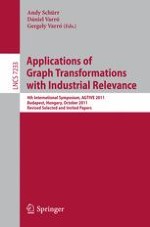This book constitutes the thoroughly refereed post-conference proceedings of the 4th International Symposium on Applications of Graph Transformations, AGTIVE 2011, held in Budapest, Hungary, in October 2011.
The 13 revised full papers presented together with 2 invited talks, 2 application reports and 3 tool demonstration papers were carefully selected from 36 submissions during two rounds of reviewing and improvement. The papers are organized in topical sections on invited talk abstracts, model-driven engineering, graph transformation applications, tool demonstrations, graph transformation exploration techniques, graph transformation semantics and reasoning, application reports and bidirectional transformations.
